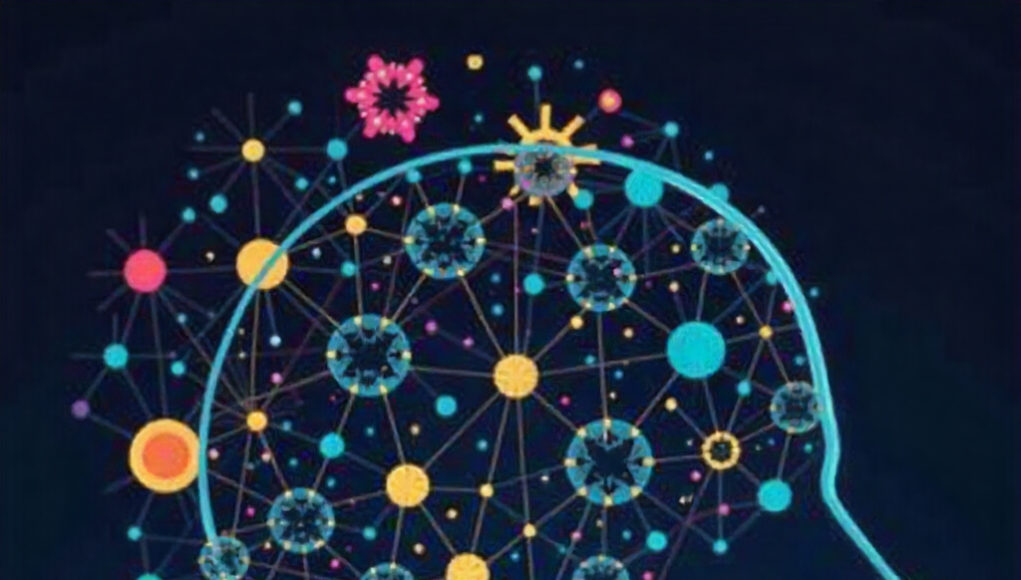Sakana AI’s M2N2: How AI Models Now Reproduce & Evolve
Here’s the wild part: Sakana AI’s researchers took two specialist AI models—one that dominates math problems and another that excels at web shopping tasks—and made them “reproduce” using an evolutionary algorithm they call M2N2 (Model Merging of Natural Niches). Think of it as nature-inspired matchmaking for neural networks, except instead of swiping right, these models are competing for survival in a digital ecosystem.
The breakthrough here is massive. Previously, when developers tried to merge AI models, they had to manually decide which parts go where—like saying “use Model A’s brain for layers 1-10 and Model B’s brain for layers 11-20.” It was tedious, limiting, and honestly kind of like trying to assemble IKEA furniture without instructions. But Sakana AI said “forget that” and let evolution figure it out instead.
How Digital Natural Selection Actually Works (It’s Wild)
M2N2 throws multiple AI models into a digital ecosystem where they compete for survival. The weak ones die off, the strong ones get to merge and create offspring. But here’s where it gets really clever: instead of just random mating, they programmed attraction based on complementary skills. Models that struggle with math get paired with mathematical geniuses. Models weak at language hook up with writing specialists. It’s like digital selective breeding, but way cooler.
The system uses three key evolutionary principles that make it work: dynamic merging boundaries that let models combine more freely (breaking those rigid layer assignments), diversity preservation mechanisms that keep the population varied, and fitness-based selection that ensures only the best combinations survive. This technique overcomes the limitations of other model merging methods by allowing the algorithm to progressively explore a broader range of parameter combinations.
When they merged WizardMath and AgentEvolve models, the hybrid absolutely destroyed what either parent could do alone on combined tasks. The resulting model achieved strong performance on both benchmarks, showcasing M2N2’s ability to create powerful, multi-skilled models.
The Real Magic: Inherited Abilities Nobody Taught Them
Then something truly impressive happened that makes this feel like science fiction. The researchers evolved image models trained exclusively on Japanese text with models trained on English text. The offspring? They could understand both languages perfectly—even when the question is translated into English, the English math model fails to answer correctly, demonstrating that the merged model is superior to a combination of machine translation and an English math model.
Let that sink in for a moment: the AI literally inherited cross-lingual abilities from its digital parents that weren’t explicitly part of its training data. It’s like if two monolingual parents somehow had a bilingual child without ever teaching them the second language. This emergent capability proves something groundbreaking—M2N2 is a method that evolutionarily merges existing model weights without retraining, creating versatile models.
What makes this approach revolutionary: Traditional AI development requires massive computational resources, expensive GPU time, and months of training. M2N2 is designed to enhance AI model capabilities without the need for costly training or fine-tuning. Instead of spending millions on compute, you can take existing open-source models and evolve them into something entirely new. With Hugging Face hosting over 500,000 models, the possibilities are virtually endless.
The practical applications are staggering. Enterprises can now create specialized AI solutions by merging existing models rather than training from scratch. Need a model that understands medical terminology in multiple languages AND can process images? Merge a medical language model with a multilingual model and a vision model, then let M2N2’s evolutionary process optimize the combination. M2N2 applies to various model types like LLMs and image generators, helping enterprises create specialized solutions from open-source variants.
Sakana AI has made their research publicly available on GitHub, and their paper has been accepted to Nature Machine Intelligence, which is basically the AI research equivalent of hitting the jackpot. The technique works with Python 3.10.12 and CUDA 12.3, though they note they can’t guarantee compatibility with other environments (classic developer disclaimer).
This is the first time anyone has proven you can evolve AI models from scratch using pure model merging—no traditional training required at all. We’re essentially witnessing the birth of AI genetics, where instead of training bigger and bigger models from scratch (the brute force approach that’s been eating up energy and compute resources), we can selectively breed existing models to create exactly what we need. The future of AI development might not be about building from the ground up—it might be about teaching our models to make smarter babies.





